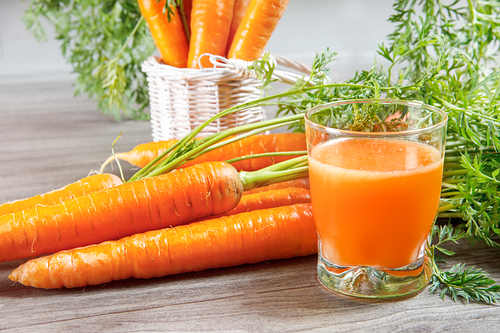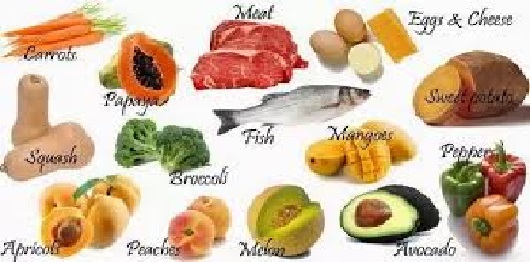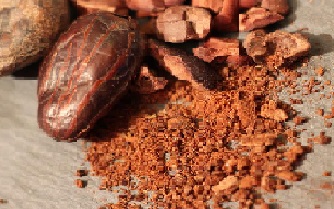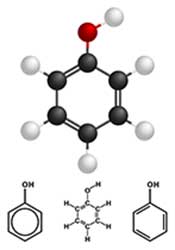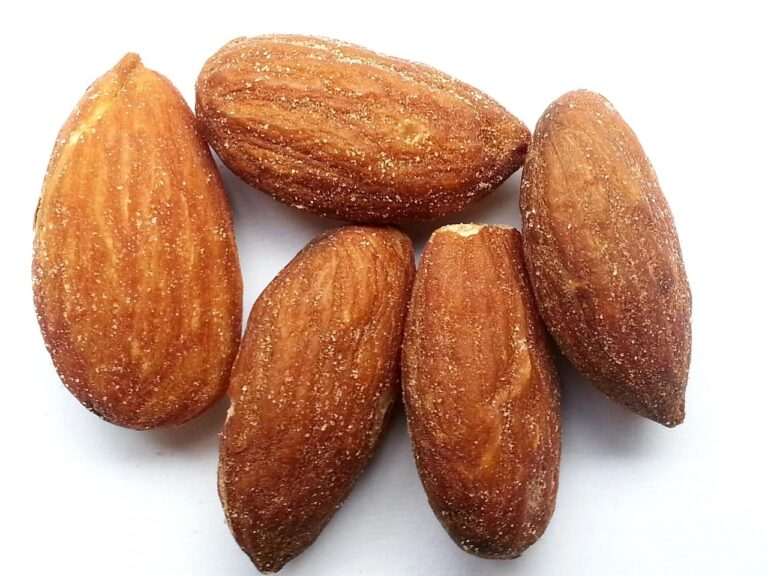Vitamin K - For "Kalcium and Klotting"
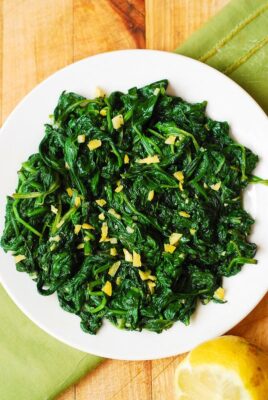
We need more vitamin K2 with its many important roles
Vitamin D helps you absorb calcium, Vitamin K2 tells your body where to put it
Vitamin K is well known as a blood clotting agent, without which, an injury could cause us to bleed to death. In fact, vitamin K was named after the German word “koagulation”. However – there are two main types of K – K1 and K2 – and although most people get enough dietary K1 to maintain adequate blood clotting, they do NOT obtain enough K2, to perform its more recently discovered important functions / roles, including:
- Supports bone health (helps body utilize calcium in the right places)
- Keeps calcium out of blood vessels, cartilage and other soft tissue
- Boosts immune system function
- Ensures healthy skin
- Relieves menstrual cramps
- Enhances liver function
- Encourages the flow of urine
- Increases vitality and longevity (fights premature aging)
- Supports growth and development
- Provides powerful antioxidant benefits (Protects cells against oxidative damage)
- Boosts memory function
- Keeps your normal blood sugar levels normal
- Providing protection against:
- Arterial calcification, cardiovascular disease and varicose veins
- Brain health problems, including dementia
- Osteoporosis (maintains strong bones in the elderly)
- Cancer. Especially Prostate cancer, Lung cancer, liver cancer and leukemia
- Tooth decay
- Diabetes / INSULIN resistance
- Infectious diseases E.g. pneumonia

Fat-Soluble vitamin K exists in two basic natural forms, K1 and K2. Each now found to have quite DIFFERENT physiological functions:
(1) Vitamin K1 (PHYLLOQUINONE) – ~90% of vitamin K intake in typical Western diet
- K1 is preferentially used by the liver – where it helps maintain a healthy blood clotting system
- Found in leafy green vegetables. olive oil and other plant foods. E.g. Brussels sprouts, Swiss chard, green beans, asparagus, broccoli, kale, leaf/romaine lettuce, cabbage, spinach, parsley, watercress, cauliflower and mustard greens. Cruciferous vegetables should be cooked to avoid suppressing thyroid hormone production.
- Adequate Vitamin K is important for those with blood type O. Since type O’s lack several clotting factors in their blood
(2) Vitamin K2 (E.g. MENAQUINONE 4,7,8,9 thru 14). ~10% of vitamin K intake in typical Western diet found in primarily fermented foods and aged cheeses; also produced by gut bacteria.
K2 is preferentially used by vessel walls, bones, and tissues other than your liver
- K2 beneficially directs calcium to be deposited in such as bones and teeth. Conversely, prevents it from depositing in locations where it does not belong, such as the soft tissues
Spronk, H.M., Soute, B.A., Schurgers, L.J., Thijssen, H.H., De Mey, J.G., Vermeer, C., 2003. Tissue-specific utilization of menaquinone-4 results in the prevention of arterial calcification in warfarin-treated rats. J. Vasc. Res. 40(6), pp 531-537.
- Sperm contains a protein that relies on K2
- Your brain uses K2
- Saliva contains K2 to protect against tooth decay
K2 has several sub forms (with repeating 5-carbon units in the side chain of the molecule) – denoted as menaquinone-n or MK-n, where n is the number of 5-carbon units):
- MK-4 (menatetrenone). Found in organ meats, marrow, brain, and fish eggs; also butter fat from animals fed lush green grass or K-rich cereals (e.g. greens, alfalfa, wheatgrass); a little in egg yolks, a trace in meats; MK4 is now known to be Dr. Weston A. Price’s so-called “Activator X”. During the 1930’s, this Cleveland dentist traveled the world investigating the health of isolated primitive peoples. He found that when included in their diet, “Activator X”(K2 MK-4) not only kept people’s teeth free of tartar, but also prevented and healed cavities, and is needed for mineral utilization. Short half-life of about one hour -remains mostly in liver as a blood clotting agent.
MK-7,8, 9 and 10 come from bacterial fermentation.
- MK-7. Found only in natto (not in the other more palatable fermented soy products e.g. miso and tempeh); The MK-7 form is longer acting (half-life of about 3 days) and is the usual supplement form (derived from natto).
- MK-8, MK-9, MK-10 and higher. Found in meat, fish, dairy products
Beneficial gut bacteria (called probiotics) produce several sub forms of vitamin K2. These lactic acid bacteria partially contribute to body’s K-status as the K2 is absorbed in small amounts from the distal small intestine (ileum).
- Broad-spectrum antibiotics have been shown to reduce vitamin K2 in the gut by nearly 74%. Conly, J; Stein K (1994). “Reduction of vitamin K2 concentrations in human liver associated with the use of broad spectrum antimicrobials”. Clinical and investigative medicine. Médecine clinique et experimentale 17(6): 531-539. PubMed
- Probiotics also aid in digestion and assimilation of vitamins. Including vitamin K . The best source of probiotics is fermented foods and drinks.
K2 sub forms found in animal foods (especially organs and pastured dairy), curds and fermented foods. Many of them containing saturated fat:
- Natto, miso (fermented soybeans)
- Sauerkraut
- Hard and soft fermented cheese – E.g. Aged Goat cheese, Camembert, Blue Cheese, Stilton, Port du Salut, Feta, Aged Cheddar, Parmesan, Romano. (Provolone, Ricotta, and Mozzarella have no K2).
- Egg yolk
- Butter from grass-fed animals
- Chicken liver
- Salami
- Chicken breast
- Ground beef
Amount of K2 in fermented Foods is dependent on type of K2-producing bacteria used for fermentation:
- Cheeses – E.g.Swiss Emmental cheese and Norwegian Jarlsberg cheese use the genus Proprionibacterium (creates CO2 bubbles that make the familiar holes in the cheese). These bacteria can make large amounts of vitamin K2 in the form of MK-9
- Fermented soy foods – the most important K2-producing bacteria are Bacillus genus, which create the MK-7 sub form of K2. Studies demonstrate that higher blood levels of MK-7 (obtained by consuming Bacillus in fermented soy) are associated with lower risk of hip fracture in older Japanese women. Natto has been an integral part of Asian cuisine for many centuries. Bacillus (E.g. B. subtilis var. natto strain used in natto production) has the potential ability to stay alive for several days in the lower intestine after consumption providing the body with MK-7.
Newborns are sometimes given K1 shots to prevent intracranial hemorrhage – to tide them over until at just over a week old, their intestinal bacteria produce K2 and the the infant has been ingesting K in colostrum, breastmilk or non-soy-based formula (contains more K than breastmilk);
Conversion of K1 to K2 in body?
Under ideal circumstances, gut bacteria or enzymes in cell metabolism can convert K1 from food and convert it into K2 – maintaining an optimal balance between the K1 and K2 forms of this vitamin. The mammary glands are especially efficient at producing K2 from K1, presumably to supply growing breast-fed infants.
Certain factors can interfere with the K1 to K2 conversion:
- Aging – Older individuals (over age 70) require higher levels of vitamin K. Tsugawa N, Shiraki M, et al. Am J Clin Nutr 2006
- Liver problems
- Fat absorption problems
The body’s K1 =>K2 conversion ratio is said to be about 10:1 and is enhanced by the presence of fat
Although animals can convert K1K2 , evidence suggests that the human diet needs to contain preformed K2 for optimal health:
- Gut bacteria can convert K1 into K2 (MK-7 homolog) but we seem unable to affectively absorb more than a small amount of the K2 they produce – since most of the vitamin K2 produced in the intestine are embedded within bacterial membranes. Unden, G. and J. Bongaerts (1997). “Alternative respiratory pathways of Escherichia coli: energetics and transcriptional regulation in response to electron acceptors.” Biochim Biophys Acta 1320(3): 217-234.
- Dietary K1 is preferentially used by the liver to make blood clotting factors. Whilst K2 is preferentially used for other tissues, and much more than just bones
- Intake of K2 is inversely associated with heart disease in humans while intake of K1 is not. Geleijnse JM, Vermeer C, Grobbee DE, Schurgers LJ, Knapen MHJ, van der Meer IM, Hofman A and Witteman JCM. “Dietary intake of menaquinone is associated with a reduced risk of coronary heart disease: The Rotterdam Study” November 2004; J Nutr 134:3100-3105
- Vitamin K2 is at least three times more effective thanvitamin K1 at activating proteins related to skeletal metabolism – K2(MK-7) increased the percentage of OSTEOCALCIN in humans three times more powerfully than did synthetic vitamin K1. Schurgers LJ, Vermeer C., 2000. Determination of Phylloquinone and Menaquinones in Food. Haemostasis. 2000; 30: 298-307
- The study showing vitamin K2′s dramatic role in treating prostate cancer, revealed that vitamin K1 had no effect. Study by European Prospective Investigation into Cancer and Nutrition (EPIC), Heidelburg, German
K Absorption
K2 is better absorbed than K1 and remains active much longer
- K1 is cleared by the liver within 8 hours, but measurable levels of K2 have been detected 72 hours after ingestion. Schurgers LJ, Teunissen KJ 2007
- K2 absorption from natto (fermented soy) is almost 100%, compared to K1 absorption rate from 200-400g green vegetables, which ranges from 5-15% depending on how much fat is present. interestingly, absorption rate is higher for smaller portions (~5oz spinach is 17%, ~2oz serving is 28%) Gijsbers et al., 1996; Garber et al, 1999
Phylloquinones present in green leafy vegetables are tightly bound to the thylakoid membranes in plant chloroplasts, and are not well solubilized and absorbed without the concomitant intake of fat, which stimulates bile secretion. Gijsbers et al, 1996; Schurgers and Vermeer, 2000; Schurgers, 2002; Vermeer et al., 2004
K2 is carried in the lymph in mixed micelles composed of bile salts, and subsequently released into the circulation.
- Higher /more stable plasma levels of vitamin K were reached with supplements containingK2 (MK-7) compared to those achieved with vitamin K1. Vermeer, 2003
- The length of the side chain of the menaquinone form affects bioavailability. Medium-length side chains (e.g., MK-7) are better absorbed compared to those with short (MK-4) or long (e.g., MK-8 and MK-9) side chains. Schurgers and Vermeer, 2000; Schurgers, 2002.
- Humans appear to have a finite ability to absorb vitamin K1 from vegetables, which dietary source may not be enough to support skeletal needs. US mean intake of K1 is <150 mcg/day and blood levels increase with dietary intake up to 200 mcg/day, after which they plateau. The Dutch have a mean intake of 250 mcg/day, but their K1 plasma levels have no relationship to dietary intake, (McKeown et al, 2002 suggesting that humans are unable to absorb much more than 200 mcg of K1 /day from vegetables. As mentioned above, our absorption of K1 declines as the amount we consume increasesstrengthening the interpretation that we might only be able to absorb ~200 mcg/day. Study subjects required an oral dose of 1000mcg of a highly absorbable pharmacological preparation of vitamin K1 to maximize the activation of proteins important to bone metabolism. (Binkley et al, 2002)If we can only absorb one-fifth of this amount from vegetables, we cannot support our skeletal system with vitamin K1 regardless of how efficiently we may be able to convert it to vitamin K2.
Absorption of vitamin K (as other fat-soluble vitamins E.g. A, D and E) depends on healthy liver, gallbladder and digestive function. Deficiency is more likely in people with digestive problems such as pancreatic disease, celiac disease, irritable bowel syndrome (IBS), ulcerative colitis, Crohn’s disease or those who have had intestinal bypass surgery.
Binkley NC, Grueger DC, Kawahara TN, Engelke JA, Chappell RJ, Suttie JW. 2002. A high phylloquinone intake is required to achieve maximal osteocalcin gamma-carboxylation. Am J Clin Nutr. 2002; 76: 1055-60.
Garber AK, Binkley NC, Krueger DC, Suttie JW. 1999. Comparison of Phylloquinone Bioavailability from Food Sources or a Supplement in Human Subjects. J Nutr. 1999; 129: 1201-1203.
Gijsbers BLMG, Jie K-SG, Vermeer C. 1996. Effect of food composition on vitamin K absorption in human volunteers. Br J Nutr. 1996; 76: 223-229.
McKeown NM, Jacques PF, Gundberg CM, Peterson JW, Tucker KL, Kiel KP, Wilson PWF, Booth SL.2002. Dietary and nondietary determinants of vitamin K biochemical measures in men and women.J Nutr. 2002; 132(6): 1329-1334.
Schurgers LJ, Vermeer C., 2000. Determination of Phylloquinone and Menaquinones in Food. Haemostasis. 2000; 30: 298-307
Schurgers LJ, Teunissen KJF, Hamulyak K, Knapen MHJ, Hogne V, Vermeer C.2007. Vitamin K-containing dietary supplements: comparison of synthetic vitamin K1 and natto-derived menaquinone-7. Blood. 2006; [Epub ahead of print].
Vermeer, C. 2003. Pharmacokinetics of vitamin K2 after ingestion of natto food and natto capsules. (Natto-1 Study). VitaK/University of Maastricht. Research Project, July 25, 2003.
Vermeer, C., Shearer, M.J., Zittermann, A., Bolton-Smith, C., Szulc, P., Hodges, S., Walter, P., Rambeck, W., Stocklin, E., Weber, P. 2004. Beyond deficiency: Potential benefits of increased intakes of vitamin K for bone and vascular health. Eur. J. Nutr. 43(6), 325-335.
Is K stored in the body?
- Although vitamin K is a fat-soluble vitamin, the body stores very little of it and its stores are rapidly depleted without regular dietary intake
- Unlike the other fat-soluble nutrients (vitamins A, D, and E), vitamin K is NOT significantly stored in the body. Beneficial bacteria(called probiotics) produce vitamin K2, but absorption of this source is poor (especially in those with digestive problems) and most people are short of these beneficial bacteria. Vitamin K must be provided daily to avoid a K- deficiency, which can develop in as few as 7 days on a vitamin K-deficient diet. Israels LG, Israels ED, et al, The riddle of vitamin K1 deficit in the newborn.Semin Perinatol. 1997 Feb;21(1):90-6.)
- Vitamin K cycle conserves K. Allowing a small amount of vitamin K to be recycled many times in the gamma-carboxylation of proteins. (see Health Benefits of Vitamin K). Warfarin / Coumadin blocks this recycling, effectively creating a functional K-deficiency

Vitamin K2 is a synergistic member of the bone and heart health team
Calcium, magnesium and vitamins A and D.
- Vitamin D helps absorb calcium from the intestines
- Vitamin K2 tells it where to go.
Two vitamin K-dependent “Star Players”
OSTEOCALCIN and MGP (Matrix GLA Protein) put calcium in bones / teeth and not in soft tissue (E.g. arteries, cartilage)
“Impairment of the function of OSTEOCALCIN and MGP due to incomplete carboxylation results in an increased risk for developing osteoporosis and vascular calcification, respectively, and is an unexpected side effect of treatment with oral anticoagulants. . . In healthy individuals, substantial fractions of OSTEOCALCIN and MGP circulate as incompletely carboxylated species, indicating that the majority of these individuals is subclinically vitamin K-deficient. Potential new application areas for vitamin K are therefore its use in dietary supplements and functional foods for healthy individuals to prevent bone and vascular disease, as well as for patients on oral anticoagulant treatment to offer them protection against coumarin-induced side effects” Cranenburg EC, Schurgers LJ, Vermeer C. Vitamin K: The coagulation vitamin that became omnipotent. Thromb Haemost. 2007 Jul;98(1):120-5.
“OSTEOCALCIN”
Vitamin K2–dependent OSTEOCALCIN activation seems to concurrently strengthen bones and inhibit (and possibly reverse) soft tissue calcification. Vitamin K2 functions as a cofactor for the enzyme (γ-glutamylcarboxylase) that activates (catalyzes the carboxylation of) a protein hormone called OSTEOCALCIN, (produced by bone-building osteoblasts), which is needed to bind calcium into hydroxyapatite crystals forming the bone matrix. OSTEOCALCIN also appears to help prevent calcium from depositing into your arteries.
Technically – the K-dependent enzyme catalyzes the carboxylation of the amino acid glutamic acid, resulting in gamma-carboxyglutamic acid (Gla); Gla’s make it possible to bind calcium. E.g. (a) OSTEOCALCIN contains 3 residues of Gla, which can bind calcium into bone, and (b) K-dependent gamma-carboxylation of glutamic acid residues in clotting factor proteins makes it possible for themto bind calcium ions, which activates the blood clotting factors |
- Not only is K2 needed to help osteoblasts produce OSTEOCALCIN to bind calcium into bones, K2 also prevents osteoclasts from breaking down bone
Animation showing how K2 (MK-7) builds bones
- Studies of “healthy”adults have found high levels of uncarboxylated (not activated) OSTEOCALCIN and MGP in all subjects tested. K2 activates both proteins, so high levels of their inactive forms indicate a lack of sufficient K2 to do the job. Cranenburg EC, Schurgers LJ. Thromb Haemost. 2007 Jul;98(1):120-5
- Vitamin K2 is three times more effective than synthetic vitamin K1 in raising OSTEOCALCIN (controls the building of bone). Schurgers LJ, Teunissen KJF, Hamulyak K, Knapen MHJ, Hogne V, Vermeer C. “Vitamin K-containing dietary supplements: Comparison of synthetic vitamin K1 and natto-derived menaquinone-7”Blood. 2006
- Vitamin K needs increase with age. Individuals >70 yrsrequire higher levels of vitamin K to keep levels of uncarboxylated (inactivated) vitamin-K dependent protein low. Tsugawa N, Shiraki M, et al. Vitamin K status of healthy Japanese women: age-related vitamin K requirement for gamma-carboxylation of osteocalcin. Am J Clin Nutr. 2006 Feb;83(2):380-6
“MGP”
Vitamin K and vitamin D together increase Matrix GLA Protein (MGP), which protects soft tissue from calcification. By preventing calcium crystal formation E.g. in blood vessels, bone spurs and cartilage
Vitamin K in hydrogenated canola and soybean oils (typically found in processed foods) is changed to an unnatural form (dihydrophylloquinone), which is unable to activate OSTEOCALCIN and MGP – such that regularly eating processed / fast foods together with a diet low in leafy greens greatly increases risk of functional K-deficiency Booth SL, Lichtenstein AH, et al. Effects of a hydrogenated form of vitamin K on bone formation and resorption Am J Clin Nutr. 2001 Dec;74(6):783-90 Those consuming higher amounts of dihydrophylloquinone were found to have lower bone mineral density at the neck, hip and spine. Troy LM, Jacques PF, Hannan MT, Kiel DP, Lichtenstein AH, Kennedy ET, Booth SL. Dihydrophylloquinone intake is associated with low bone mineral density in men and women. Am J Clin Nutr. 2007 Aug;86(2):504-8. |

Health benefits of vitamin K2
Heart disease – K2 and vitamin D protect blood vessels from calcification
According to vitamin K researcher Professor Cees Vermeer: The only mechanism for arteries to protect themselves from calcification is via the vitamin K-dependent protein MGP. MPG is the most powerful inhibitor of soft tissue calcification presently known, but non-supplemented healthy adults are desufficient in vitamin K to a level that 30 per cent of their MGP is synthesized in an inactive form. So, protection against cardiovascular calcification is only 70% in the young, healthy population, and this figure decreases at increasing age.”
Vitamin K and vitamin D increase MGP, which protects blood vessels from calcification – In healthy arteries, MGP functions as a powerful inhibitor of calcification in arteries (and cartilage). MGP congregates around the elastic fibers of the tunica media (arterial lining), guarding them against calcium crystal formation. Optimal vitamin K levels are needed to produce proper amounts of MGP to prevent arterial calcification. Shearer Role of vitamin K and Gla proteins in the pathophysiology of osteoporosis and vascular calcification. MJ.Curr Opin Clin Nutr Metab Care 2000 Nov;3(6):433-8; Dhore CR, Cleutjens JP, Lutgens E, et. al. Differential expression of bone matrix regulatory proteins in human atherosclerotic plaques. Arterioscler Thromb Vasc Biol. 2001 Dec;21(12):1998-2003. Even a diet rich in leafy greens supplies less than half the vitamin K needed for its calcium-regulating activities. Cranenburg EC, Schurgers LJ. Thromb Haemost. 2007 Jul;98(1):120-5.
Evidence for K2 rather than K1 for heart benefits.
- People who consume 45 mcg of K2 daily live seven years longer than people getting 12 mcg per day – In the 2004 Rotterdam study, those in the highest third of vitamin K2 intakes were 52% less likely to develop severe calcification of the arteries, 41% less likely to develop heart disease, and 57% less likely to die from it than people with the lowest intake of vitamin K2. Geleijnse JM, Vermeer C, Grobbee DE, Schurgers LJ, Knapen MHJ, van der Meer IM, Hofman A and Witteman JCM. “Dietary intake of menaquinone is associated with a reduced risk of coronary heart disease: The Rotterdam Study“November 2004; J Nutr 134:3100-3105
- Researchers also found that each additional 10 mcg of vitamin K2 in the diet resulted in 9% fewer cardiac events
- K2 found to reduce incidence of heart attack – in 2009, a Dutch dietary study further analyzed data from the EPIC-Prospect study. Note that NO relationship was found between K1 intake and heart attack incidence, suggesting poor bodily conversion of K1 to K2 (all women were over 49 yrs old, which could be a relevant factor) .
- Vitamin K2, but not K1 has been reported to decrease serum cholesterol and cholesterol-ester deposition in the aorta Рcontributing to the suppression of atherosclerotic plaque progression. Graul, A., Casta̱er, J., 1996. Menatetrenone: Treatment for osteoporosis. Drugs Future 21(6), 615-620; Spronk, H.M., Soute, B.A., Schurgers, L.J., Thijssen, H.H., De Mey, J.G., Vermeer, C., 2003. Tissue-specific utilization of menaquinone-4 results in the prevention of arterial calcification in warfarin-treated rats. J. Vasc. Res. 40(6), 531-537.
- Animal studies – show that vitamin K2 not only prevents hardening of the arteries but can actually reverse calcification of highly calcified arteries, by activating MGP.
People with severe calcifications have high percentages of inactive OSTEOCALCIN – which indicates a general deficiency of vitamin K2.
Taking Calcium to prevent osteoporosis WITHOUT vitamin K increases risk of heart attack by an average 149% whilst decreasing risk of fracture by only 12% – According to 2008 randomized, controlled research published in British Medical 1471 postmenopausal women taking calcium supplements also increased their risk of stroke an average of 142% and sudden death 137%. Bolland MJ, Barber PA, Doughty RN, et al. Vascular events in healthy older women receiving calcium supplementation: randomised controlled trial. BMJ. 2008 Feb 2;336(7638):262-6. An editorial accompanying the study entitled “Cardiovascular risks of calcium supplements in women – Increased risk of myocardial infarction outweighs the reduction in fractures”points out: “Under certain stimuli, vascular smooth muscle cells may undergo a phenotypic switch to bone-like cells, and in the presence of high amounts of calcium these may be capable of producing vascular calcification.” Jones G, Winzenberg T. BMJ. 2008 Feb 2;336(7638):226-7. A footnote refers to the “certain stimuli”as lack of sufficient vitamin K2, which can cause the cells lining blood vessel walls to absorb calcium, like bone cells. Wallin R, Wajih N, et al. Arterial calcification: a review of mechanisms, animal models, and the prospects for therapy. Med Res Rev. 2001 Jul;21(4):274-301 The long and short — Don’t take calcium supplements without concurrent intake of vitamin K1 (from eating such as dark green leafy and cruciferous vegetables, although older people seem to have a poor conversion of K1 to K2) and a K2 supplement. Also, taking vitamin D increases calcium absorption making vitamin K even more necessary |
Osteoporosis – vitamin K2 strengthens bones
High-dose K2 can not only increase bone mineral density in those with osteoporosis but also reduce fracture rates (according to human intervention studies). Emerging evidence also supports that low dose K1 when combined with vitamin D may also benefit bone health. Proposed K mechanisms are:
- Vitamin K2‘s role in activation (carboxylation) of OSTEOCALCIN (a hormone involved in bone mineralization)
- Vitamin K2 positively affects calcium balance. Increasing evidence suggests calcium is a key mineral in bone metabolism. Weber P. Vitamin K and bone health. Nutrition. 2001 Oct;17(10):880-7.
Supporting trials:
- Japanese trials showed that vitamin K2 completely reverses bone loss – and in some cases even increases bone density in people with osteoporosis. Vermeer C, Shearer M J, Zitterman A, Bolton-Smith C, Szulc P, Hodges S, Walter P, Rambeck W, Stocklin E, Weber P. “Beyond deficiency: Potential benefits of increased intakes of vitamin K for bone and vascular health”Eur J Nutr. December 2004;43(6):325-335
- Seven pooled Japanese trials show that vitamin K2 supplementation produces a 60% reduction in vertebral fractures and an 80% reduction in hip and other non-vertebral fractures. Cockayne S, Adamson J, Lanham-New S, Shearer MJ, Gilbody S, Torgerson DJ. “Vitamin K and the prevention of fractures: Systematic review and meta-analysis of randomized controlled trials” Arch Intern Med. 2006; 166: 1256-1261; Cancer – K2, but not K1, reduces cancer risk
In the Prospect EPIC (European Prospective Investigation into Cancer and Nutrition) study, 16,057 women (aged 49-70) were followed for an average of 8.1 years. It was found that a high intake of vitamin K2, but not K1, leads to reduced cancer risk and a 30% lower risk of dying from cancer, in particular it lowered risk of prostate cancer, lung cancer and leukemia / MDS (study data suggests that vitamin K2+ vitamin D3 may be an effective combination for differentiation-based therapy for leukemia and MDS)
Daniells S. “Vitamin D may reduce cancer risk: EPIC study“Nutraingredients.com(March 30, 2010)
Nimptsch K, Rohrmann S, Kaaks R, and Linseisen J. “Dietary vitamin K intake in relation to cancer incidence and mortality: Results from the Heidelberg cohort of the European Prospective Investigation into Cancer and Nutrition (EPIC-Heidelberg)”Am J Clin Nutr (March 24, 2010) PubMed
Yoshida T, Miyazawa K, Kasuga I, Yokoyama T, Minemura K, Ustumi K, Aoshima M, Ohyashiki K. Apoptosis induction of vitamin K2 in lung carcinoma cell lines: the possibility of vitamin K2 therapy for lung cancer. Int J Oncol. 2003 Sep;23(3):627-32. PMID: 12888897.
Iguchi T, Miyazawa K, Asada M, Gotoh A, Mizutani S, Ohyashiki K. Combined treatment of leukemia cells with vitamin K2 and 1alpha,25-dihydroxy vitamin D3 enhances monocytic differentiation along with becoming resistant to apoptosis by induction of cytoplasmic p21CIP1. Int J Oncol. 2005 Oct;27(4):893-900. PMID: 16142303.
Varicose veins
New research shows that K2-dependently-activated MGP is needed to prevent the excessive proliferation and mineralization of muscle cells in the walls of the veins that ca uses varicose veins –Researchers compared healthy veins from 36 male patients (aged 30 – 83) with varicose veins from 50 male patients (aged40 – 81). High levels of uncarboxylated (inactive) MGP and increased calcification were seen only in the varicose veins. When vitamin K was added to cultures of small muscle cells from the varicose veins, MGP was activated, stopping the mineralization process.
Cario-Toumaniantz C, Boularan C, Schurgers LJ, Heymann MF, Le Cunff M, Léger J, Loirand G, Pacaud P. Identification of Differentially Expressed Genes in Human Varicose Veins: Involvement of Matrix Gla Protein in Extracellular Matrix Remodeling. J Vasc Res. 2007 Jul 20;44(6):444-459 [Epub ahead of print] Abstract
Diabetes – vitamin K2 promotes INSULIN sensitivity
Vitamin K-activated OSTEOCALCIN ( a hormone secreted by bone-buildingosteoblast cells) is directly involved in the proliferation of INSULIN– producing pancreatic β-cells – thus improving glucose tolerance and INSULIN sensitivity.
- No OSTEOCALCIN = Low INSULIN – Mice genetically engineered to lack the genes expressed in osteoblasts that enable OSTEOCALCIN secretion are unable to produce normal levels of pancreatic β-cells, and become glucose intolerant and INSULIN resistant.
- OSTEOCALCIN increases production of ADIPONECTIN, an INSULIN–sensitizing hormone produced by fat cells (adipocytes) – further improving INSULIN sensitivity and glucose tolerance. Lee NK, Sowa H, Hinoi E, Ferron M, Ahn JD, Confavreux C, Dacquin R, Mee PJ, McKee MD, Jung DY, Zhang Z, Kim JK, Mauvais-Jarvis F, Ducy P, Karsenty G. Endocrine regulation of energy metabolism by the skeleton. Cell. 2007 Aug 10;130(3):456-69.Abstract
Anti-Wrinkle Action
Vitamin K2-dependent activation of MGP plays a key role in protecting skin elasticity by inhibiting calcium deposits in elastin fibers – smoothing out lines and wrinkles. Gheduzzi D, Boraldi F, et al. Matrix Gla protein is involved in elastic fiber calcification in the dermis of pseudoxanthoma elasticum patients. Lab Invest. 2007 Oct;87(10):998-1008.
Vitamin K2 protects nerves
Evidence suggests that vitamin K2 plays a role as an antioxidant within the cells that synthesize the myelin sheath – which forms the electrical insulation of nerves. Denisova NA, Booth SL. Vitamin K and Sphingolipid Metabolism: Evidence to Date. Nutr Rev. 2005; 63(4): 110-121.

How to obtain vitamin K?
No fat / No K
Low fat diets are a bad idea if you want to obtain vitamin K – Eat vitamin K or take K2 supplements with fat such as olive olive oil and butter to enable effective K absorption
- Fats act as carriers of the fat-soluble vitamins (A, D, E, and K) and the carotenoids – thus enabling their absorption.
- Low fat processed foods have less naturally occurring vitamin K – since K is removed with the fats.
Balance intake of K with the rest of the bone and heart health “Team”
K2 works in synergy with:
Recommended daily dose of K?
The Institute of Medicine Recommended Dose of Vitamin K – recently increased to 90 micrograms/d for females and 120 microg/d for males (an increase of ~ 50% from previous recommendations). However, this dose is much lower than study doses that increased carboxylation of OSTEOCALCIN for bone mineralization and increased MGP to prevent calcium crystallization where it doesn’t belong.
Vitamin K1 (Phylloquinone)
K1 is easily obtained in our diet – and is important for producing clotting factors but did not seem to influence study results that helped CVD or cancer.
Some Foods High in Vitamin K1 (USDA Nutrient Base) | |||
| Details | Portion | Vitamin K1 (mcg) | |
| Kale | Boiled, fresh, drained | ½C | 531 |
| Boiled, frozen, drained | ½C | 573 | |
| Spinach | Boiled, fresh, chopped | ½C | 444 |
| Boiled, frozen, chopped | ½C | 514 | |
| Brussel Sprouts | Boiled, fresh | 1C | 218 |
| Boiled, frozen | 1C | 300 | |
| Broccoli | Boiled, fresh, drained | 1C | 220 |
| Boiled, frozen, drained | 1C | 163 | |
| Cabbage | Boiled, fresh, drained | ½C | 81 |
| Asparagus | Boiled, fresh, drained | ½C (6 spears) | 45 |
| Boiled, frozen, drained | ½C (6 spears) | 44 | |
| Butterhead Lettuce | Raw; Incl. Boston, Bibb | ¼head | 42 |
| Kiwi | Raw | medium | 31 |
| UK -2003* | 68mcg/day@ | ||
| US -1996Young adults # | 60-110mcg/day@ | ||
| US -1996Adults> 55 yrs old # | 80-210mcg@ | ||
* EVM, 2003. Safe Upper Levels for Vitamins and Minerals. Risk Assessment: Vitamin K. Report of the Expert Group on Vitamins and Minerals; London, Engl., pp. 154-161. Available from: <http://www.food.gov.uk/multimedia/pdfs/vitmin2003.pdf>.
# Data from Several US studies @ Mean average intake from food
Vitamin K2 (Menaquinones)
K2 form is many times more effective than K1
K2 effective aganst heart disease and cancer, but not K1 – A 2004 study published in the “Journal of Nutrition” studied the effects of vitamin K1 and K2 ingestion on heart disease. A high dietary intake of menaquinone, mostly in the form of cheese, was correlated with a lower risk of heart disease.
K2 content of Some Foods (in mcg)Good K2 sources are egg yolks, liver, some aged cheeses and fermented foods | |||||
| K2 Type => | MK-4 | MK-7 | MK-8 | MK-9 | MK-10 |
| Natto (Fermented soybean) (½oz) | 142 | 12 | |||
| Sauerkraut | Purported to be high in K2 | ||||
| Hard Cheese (3.5oz) | 5 | ||||
- MK-4 produced by animal tissue, the rest are produced by bacteria during fermentation
- After eating, MK-4 survives 3-4 hours, MK-7 survives several days in body
- Soft cheeses contain 30% less K2 than hard cheeses
Most table data calculated from ng/g values at:
Vermeer, C., Knapen, M.H., Schurgers, LJ., 1998. Vitamin K and metabolic bone disease. J Clin. Pathol. 51(6), 424-426.
Ikeda Y., Iki M., Morita A., Kajita E., Kagamimori S., Kagawa Y., Yoneshima H. (2006). Intake of fermented soybeans, natto, is associated with reduced bone loss in postmenopausal women: Japanese Population-Based Osteoporosis (JPOS) Study. J. Nutr. 2006 May; 136(5):1323-8.
Schurgers, L.J., Vermeer, C., 2000. Determination of phylloquinone and menaquinones in food. Effect of food matrix on circulating vitamin K concentrations. Haemostasis 30(6), 298-307.
“K-Sandwich”▲ Butter a piece of whole-grain bread (properly prepared to remove antinutrients) with organic butter from grass-fed cows |
Who needs to supplement K?
Those with K-deficient symptoms / conditions:
- Excessive bruising and bleeding (blood type O’s have this tendency)
- Digestive system problems, especially malabsorption -pancreatic disease, celiac disease, irritable bowel syndrome (IBS), ulcerative colitis, Crohn’s disease or those who have had intestinal bypass surgery; since vitamin K is a fat-soluble nutrient, these conditions increase the likelihood of fat malabsorption.
- Liver disease (interferes with K storage)
- Gallbladder problems (lack of bile salts interferes with the break-down/absorption of all fat-soluble vitamins)
- Older individuals (over age 70)
Those with or who want to prevent:
- CVD
- Osteoporosis or those > 65 yrs(who are at risk of osteoporosis/hip fractures)
- Bone spurs
- Leukemia or cancer of the lung, liver,orprostate
- Heart attack / Stroke
- Heavy menstrual flow/menstrual pain
- Hemorrhagic disease
- Kidney stones
- Nausea and vomiting during pregnancy
- Osteoporosis and Osteopenia
- Pulmonary embolism
- Rheumatoid arthritis
Supplementing K
Low dose* Vitamin K supplementation has been shown to stabilize fluctuations in INR** of those taking warfarin
*Low dose = 50-150 mcg/day; ** INR is a standard measurement for the time it takes for blood to clot.
Sconce E, Khan T, Mason J, et al. Patients with unstable control have a poorer dietary intake of vitamin K compared to patients with stable control of anticoagulation. Thromb Haemost. 2005 May;93(5):872-5.
However, If on cholesterol-lowering or blood-thinning medication, do not supplement K without seeking medical supervision
Supplement K2 not K1 – K1 is usually supplied in the diet and K2 is more effective against the health problems listed above.
MK-7 form extracted from natto is longer acting/better absorbed than MK-4 (synthetic supplemental form supposedly identical to natural MK-4), MK-8 or MK- 9 supplements – CHOOSE MK-7 EXTRACTS from NON-GMO SOY.
You don’t need to take a K2 supplement if you can eat ½oz of relatively cheap natto daily –which provides ~154 mcg of K2. Unfortunately, most Westerners find natto unpalatable (not only slimy, it also smells pretty bad)
K2 supplement Dosage? – Vitamin K expert Dr. Vermeer recommends between 45 mcg and 185 mcg daily for adults. This author’s suggested recommendation is:
Take 150 mcg K2 /day WITH FAT (to enable its absorption).
K -Toxicity
Although allergic reaction is possible, there is no known toxicity associated with high doses of vitamin K1 or K2 forms of vitamin K
Food and Nutrition Board, Institute of Medicine. Vitamin K. Dietary Reference Intakes for Vitamin A, Vitamin K, Arsenic, Boron, Chromium, Copper, Iodine, Iron, Manganese, Molybdenum, Nickel, Silicon, Vanadium, and Zinc. Washington, D.C.: National Academy Press; 2001:162-196. (National Academy Press). It has been found to be safe even at 45 mg or more per day – up to a thousand times greater than generally occurring in the daily diet.
Synthetic menadione (vitamin K3) and its derivatives have resulted in several health problems – as such, it is no longer used.
Drug / Nutrient Interactions
Drug Interactions
- Anticoagulants (E.g. Warfarin/Coumarin) – interfere with vitamin K activity, reducing available K
- Cholesterol lowering bile acid sequestrants (E.g. Cholestyramine, Colestipol) – may reduce the intestinal absorption of the fat-soluble vitamins A, D, E, and K
Nutrient interactions. Large doses of vitamin A and vitamin E (~1000 IU or more) have been found to antagonize vitamin K. Olson RE. Vitamin K. In: Shils M, Olson JA, Shike M, Ross AC, eds. Modern Nutrition in Health and Disease. 9th ed. Baltimore: Lippincott Williams & Wilkins; 1999:363-380.
Testing for K-sufficiency
The usual prothrombin test only tests for clotting activity – and does notindicate whether enough K is present to maintain vascular matrix-GLA protein or bone OSTEOCALCIN activity.
OSTEOCALCIN test – measures how much uncarboxylated OSTEOCALCIN is present in the blood.High levels indicate insufficient vitamin K present to promote optimal bone health.
Matrix-GLA protein ( MGP) test – High levels of undercarboxylated MGP indicate that insufficient vitamin K is present to protect against vascular calcification.

References
Linus Pauling Institute: http://lpi.oregonstate.edu/infocenter/vitamins/vitaminK/
Weston A.Price Foundation: http://www.westonaprice.org/fat-soluble-activators/x-factor-is-vitamin-k2
Vitamin K2 as source of vitamin K added for nutritional purposes to foodstuffs http://www.efsa.europa.eu/en/scdocs/doc/nda_op_ej822_vit_k2_en.pdf?ssbinary=true
















